Pressure Fluctuation and Flow Characteristics in a Two-Stage Double-Suction Centrifugal Pump
Abstract
:1. Introduction
2. Research Object and Numerical Method
2.1. Two-Stage Double-Suction Centrifugal Pump
2.2. Turbulence Model and Boundary Conditions
2.3. Monitor Points
2.4. Grid Convergence and Time Step Analysis
2.4.1. Grid Convergence Analysis
2.4.2. Time Step Analysis
3. Results and Discussions
3.1. General Fluctuation Performance in the Whole Passage
3.2. Pressure Fluctuation with BPF and Its Harmonics
3.3. Pressure Fluctuation with 25 Hz
3.3.1. Fluctuation at the Leading Edge
3.3.2. Fluctuation at the Trailing Edge
4. Conclusions
Author Contributions
Funding
Conflicts of Interest
References
- Tatsuji, Y.; Tatsuo, H. Fluctuating Flow behind the Impeller of Centrifugal Pump. Bull. JSME 1979, 22, 1746–1753. [Google Scholar] [CrossRef]
- Raú, B.L.; Blanco, E.; Jorge, P.; Parrondo, J.; González, J. The Effect of Impeller Cutback on the Fluid-Dynamic Fluctuations and Load at the Blade-Passing Frequency in a Centrifugal Pump. J. Fluids Eng. 2008, 130, 1349–1357. [Google Scholar] [CrossRef]
- Parrondo, J.; Pérez, J.; Barrio, R.; González, J. A Simple Acoustic Model to Characterize The Internal Low Frequency Sound Field in Centrifugal Pumps. Appl. Acoust. 2011, 72, 59–64. [Google Scholar] [CrossRef]
- Cooper, P.; Sloteman, D.P.; Graf, E.; Vlaming, D.J. Elimination of Cavitation-Related Instabilities and Damage in High-Energy Pump Impellers. In Proceedings of the eighth International Pump Users Symposium, Houston, TX, USA, 5–7 March 1991; pp. 3–19. [Google Scholar]
- Luo, X.W.; Bin, J.; Tsujimoto, Y. A Review of Cavitation in Hydraulic Machinery. J. Hydrodyn. B 2016, 28, 335–358. [Google Scholar] [CrossRef]
- Guelich, J.F.; Bolleter, U. Pressure Fluctuations in Centrifugal Pumps. J. Vib. Acoust. 1992, 114, 272–279. [Google Scholar] [CrossRef]
- Yao, Z.F.; Wang, F.J.; Qu, L.X.; Xiao, R. Experimental Investigation of Time-Frequency Characteristics of Pressure Fluctuations in a Double-Suction Centrifugal Pump. J. Fluids Eng. 2011, 133, 1076–1081. [Google Scholar] [CrossRef]
- Guo, S.; Maruta, Y. Experimental Investigations on Pressure Fluctuations and Vibration of the Impeller in a Centrifugal Pump with Vaned Diffusers. JSME Int. J. Ser. B 2005, 48, 136–143. [Google Scholar] [CrossRef] [Green Version]
- Spence, R.; Joao, A.T. Investigation into Pressure Pulsations in a Centrifugal Pump Using Numerical Methods Supported by Industrial Tests. Comput. Fluids 2008, 37, 690–704. [Google Scholar] [CrossRef]
- Spence, R.; Joao, A.T. A CFD Parametric Study of Geometrical Variations on the Pressure Pulsations and Performance Characteristics of a Centrifugal Pump. Comput. Fluids 2009, 38, 1243–1257. [Google Scholar] [CrossRef]
- Li, C.; Wang, F.; Xu, J.; Li, R.; Wang, J. Pressure Fluctuation of a Two-Stage Double-Suction Centrifugal Pump. Trans. Chin. Soc. Agric. Mach. 2011, 42, 41–49. [Google Scholar]
- Ye, C.; Wang, F.; Li, H.; Li, Z. Pressure Fluctuation Characteristics in Inter-Stage Flow Channel of Double-Inlet Two-Stage Double-Suction Centrifugal Pump. Trans. Chin. Soc. Agric. Mach. 2017, 48, 126–134. [Google Scholar]
- González, J.; FernáNdez, J.; Blanco, E.; Santolaria, C. Numerical Simulation of the Dynamic Effects due to Impeller-Volute Interaction in a Centrifugal Pump. J. Fluids Eng. 2002, 124, 348–355. [Google Scholar] [CrossRef]
- Nagahara, T.; Inoue, Y.; Sato, T.; Sakata, S. Investigation of the Flow Field in a Multistage Pump by Using LES. In Proceedings of the ASME 2005 Fluids Engineering Division Summer Meeting, Houston, TX, USA, 19–23 June 2005; pp. 1321–1329. [Google Scholar] [CrossRef]
- Menter, F.R. Two-Equation Eddy-Viscosity Turbulence Models for Engineering Applications. AIAA Stud. J. 2012, 32, 1598–1605. [Google Scholar] [CrossRef]
- Liu, J.; Liu, S.; Wu, Y.; Jiao, L. Numerical Investigation of the Hump Characteristics of a Pump-Turbine Based on an Improved Cavitation Model. Comput. Fluids 2012, 68, 105–111. [Google Scholar] [CrossRef]
- Li, D.; Wang, H.; Xiang, G.; Gong, R.; Wei, X.; Liu, Z. Unsteady Simulation and Analysis for Hump Characteristics of a Pump-Turbine Model. Renew. Energy 2015, 77, 32–42. [Google Scholar] [CrossRef]
- Gülich, J.F. Centrifugal Pumps, 2th ed.; Springer: Berlin/Heidelberg, Germany; London, UK, 2010; ISBN 978-3-642-12823-3. [Google Scholar]
- Menter, F.R.; Kuntz, M.; Langtry, R. Ten Years of Industrial Experience with the SST Turbulence Model. Int. J. Heat Mass Transf. 2003, 4, 625–632. [Google Scholar]
- Celik, I.; Ghia, U.; Roache, P.J.; Freitas, C.J. Procedure of Estimation and Reporting of Uncertainty Due to Discretization in CFD Applications. J. Fluids Eng. 2008, 130, 078001. [Google Scholar] [CrossRef]
- Richardson, L.F. The Approximate Arithmetical Solution by Finite Differences of Physical Problems Involving Differential Equations, with an Application to the Stresses in a Masonry Dam. Philos. Trans. R. Soc. Lond. A 1911, 210, 307–357. [Google Scholar] [CrossRef] [Green Version]
- Roache, P.J. Quantification of Uncertainty in Computational Fluid Dynamics. Annu. Rev. Fluid Mech. 1997, 29, 123–160. [Google Scholar] [CrossRef]
- Roache, P.J. Verification and Validation in Computational Sciencend Engineering; Hermosa Pub: Sierra County, NM, USA, 1998. [Google Scholar] [CrossRef]
- Ye, C.; Wang, F.; Li, H.; Li, Z.; Song, Q. Investigation on the Clocking Effect of a Double-Entry Two-Stage Double Suction Centrifugal Pump with High Head. J. Hydraul. Eng. 2018, 49, 858–868. [Google Scholar] [CrossRef]






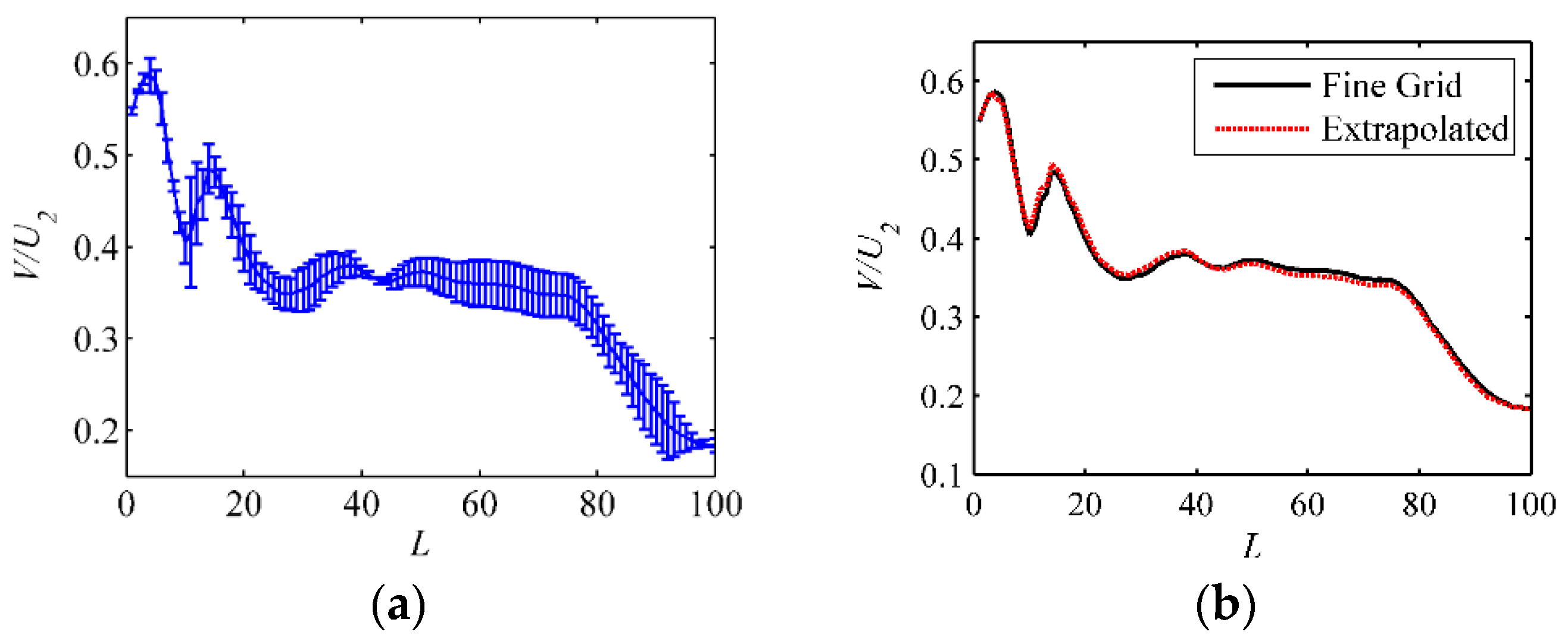


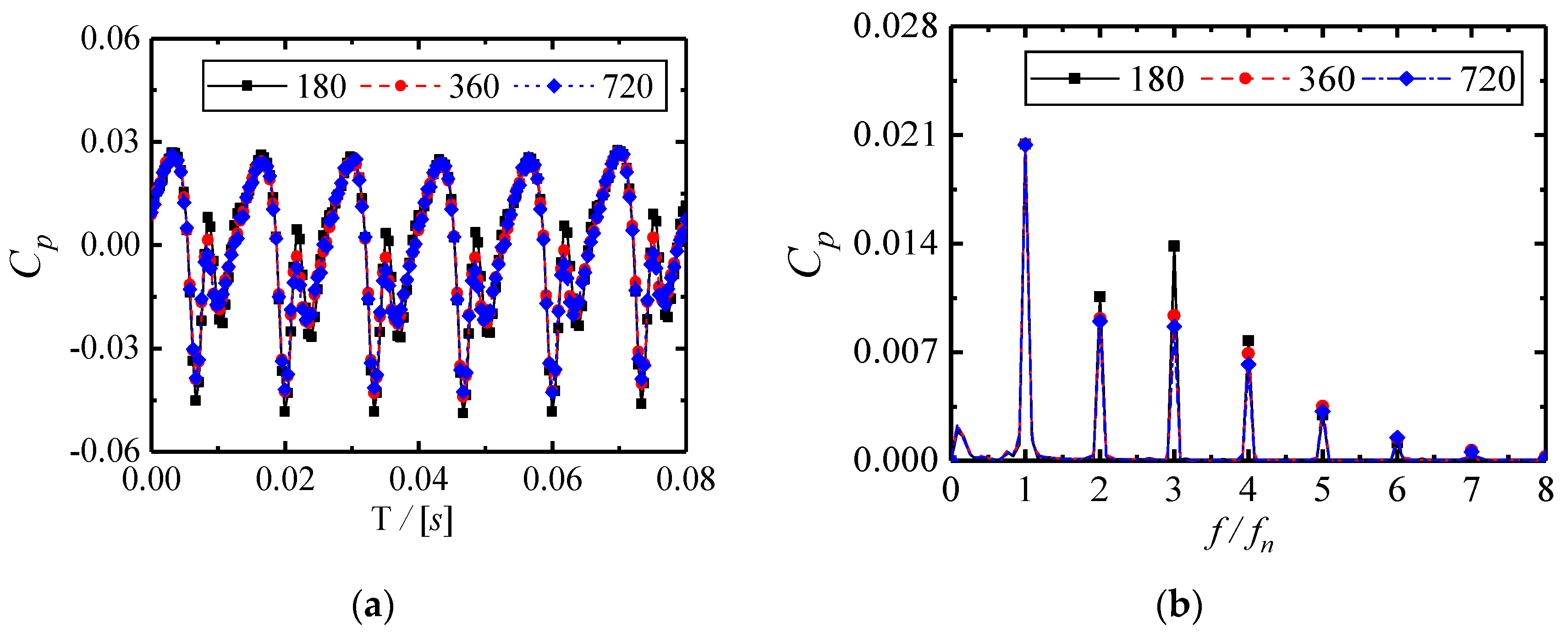


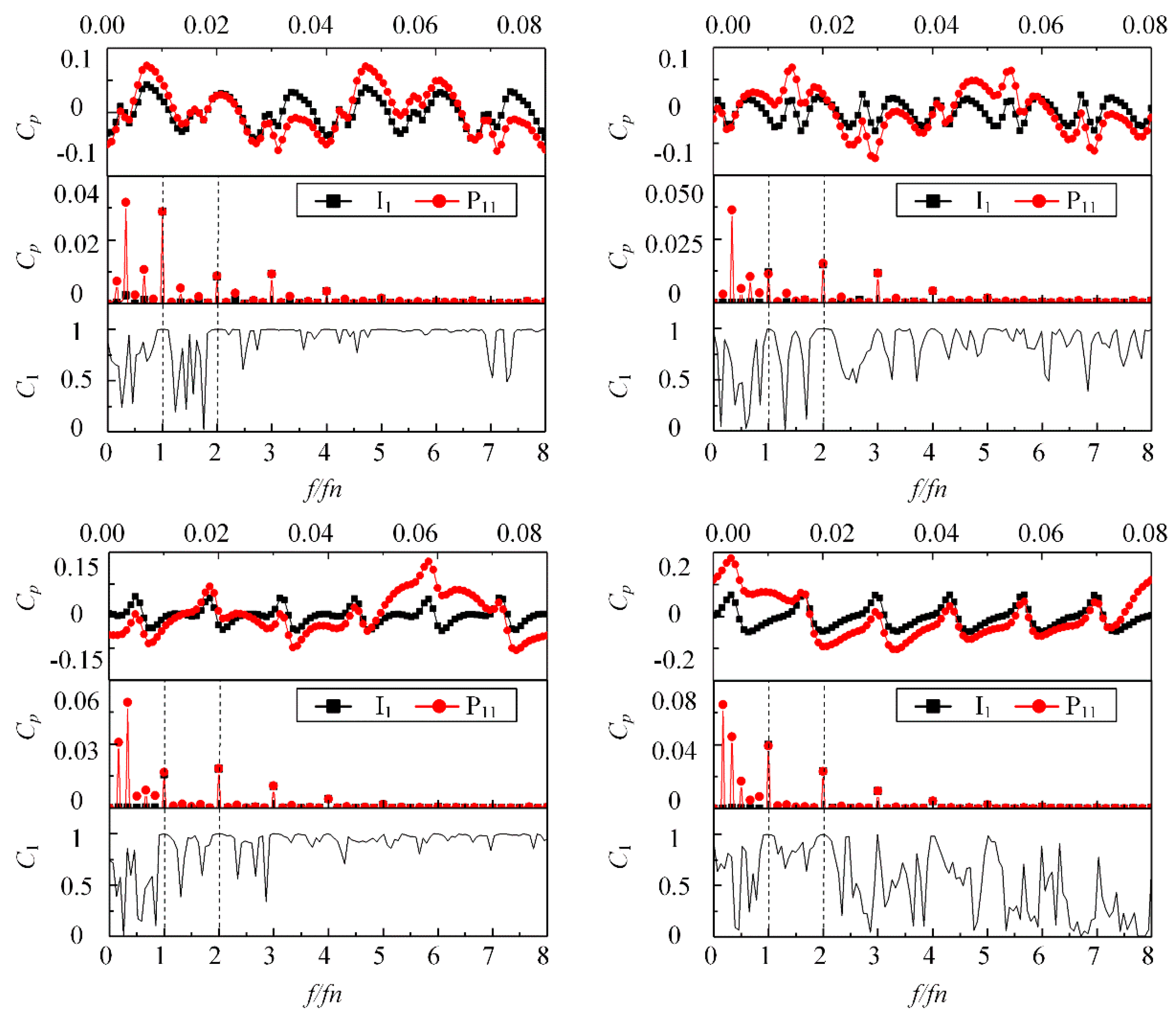

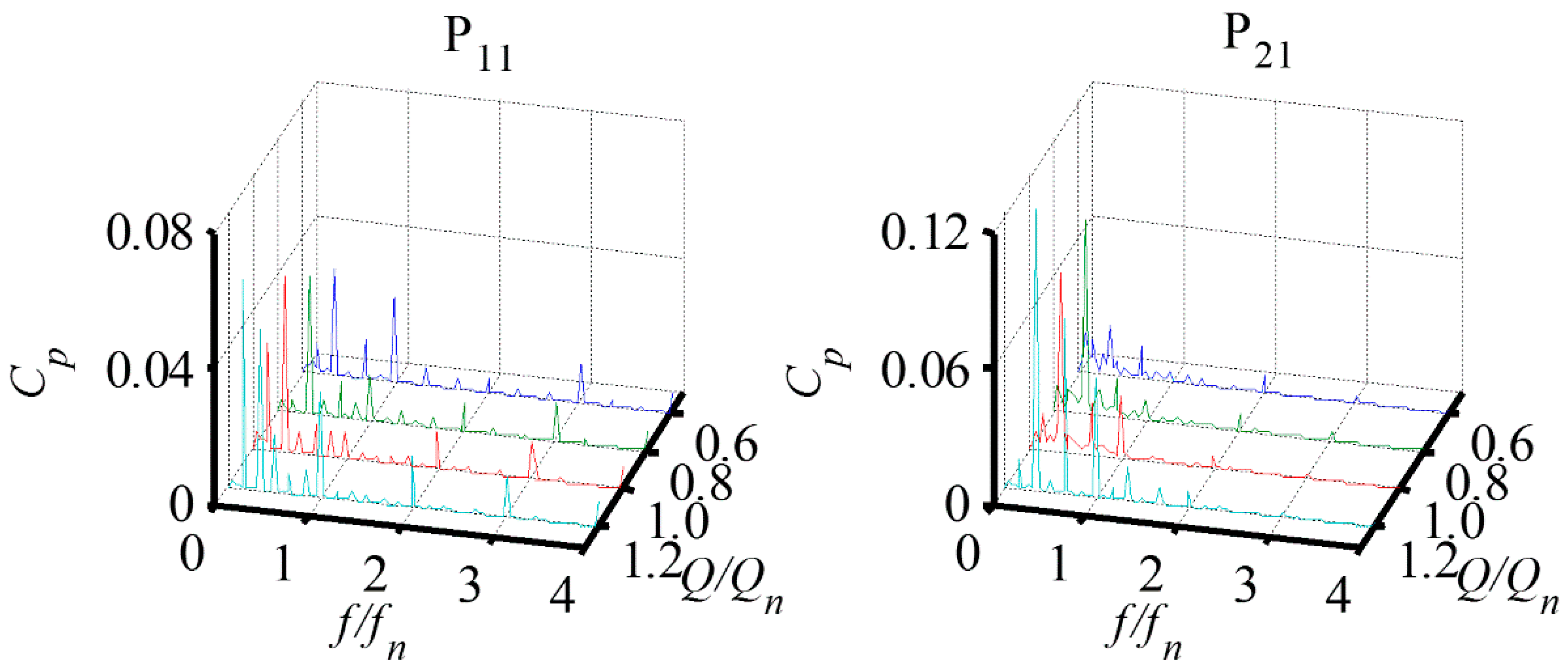
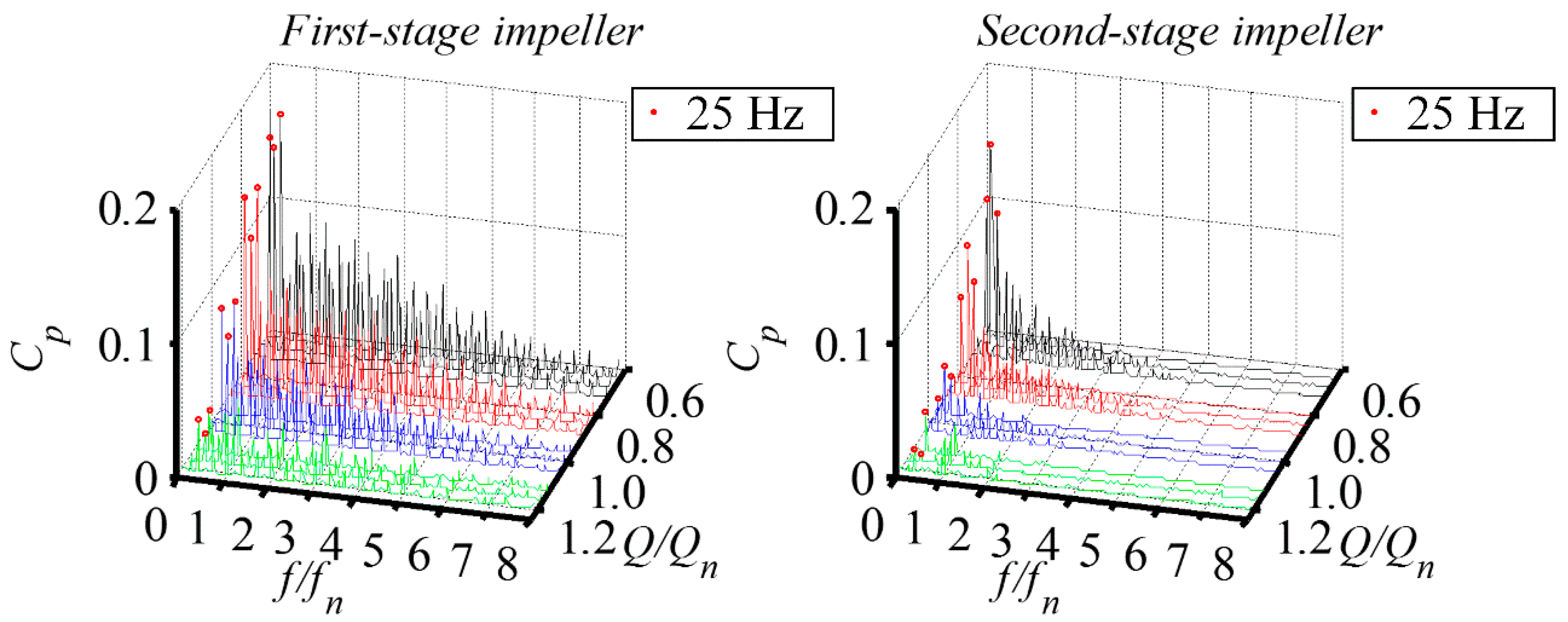
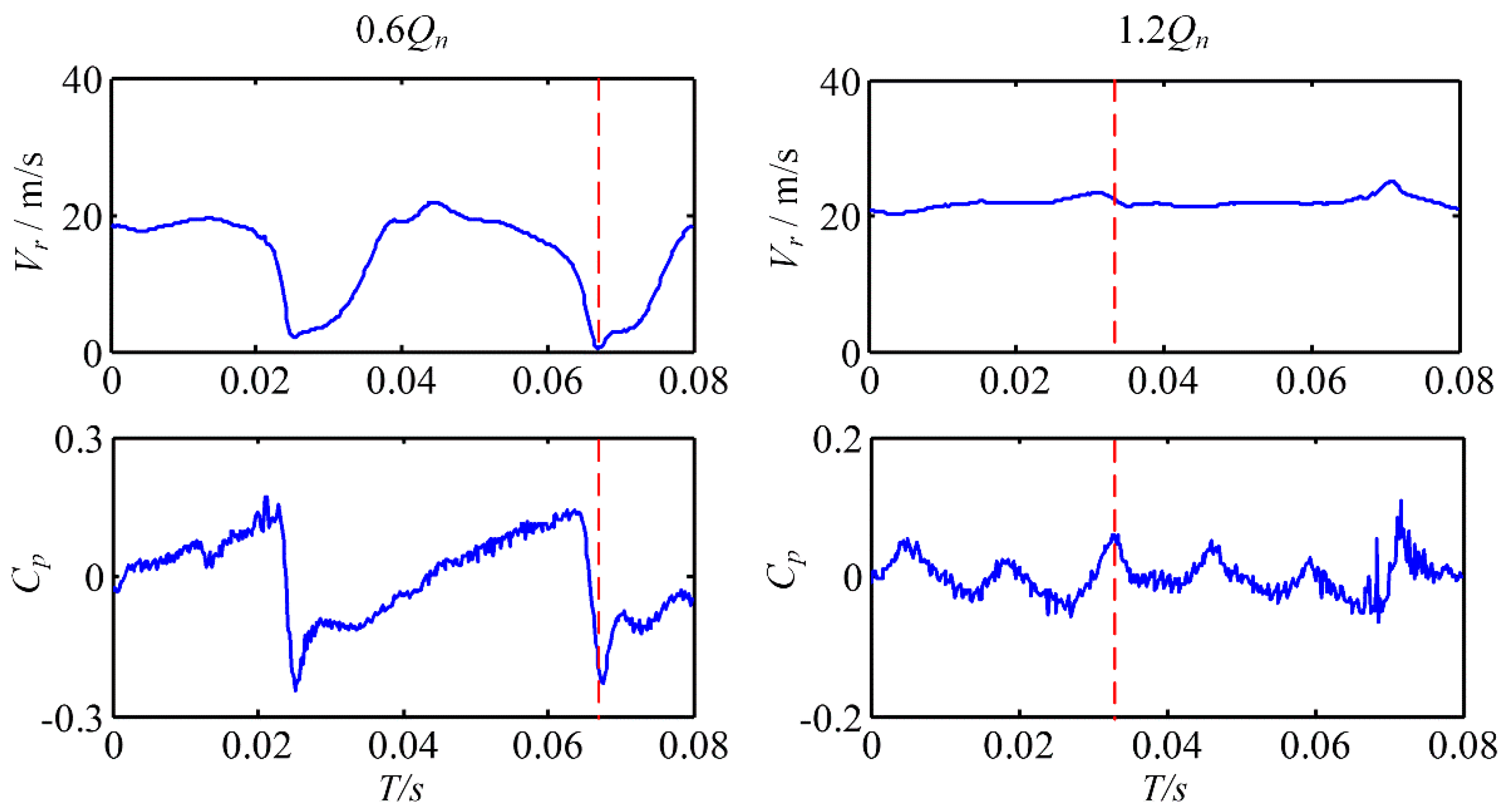
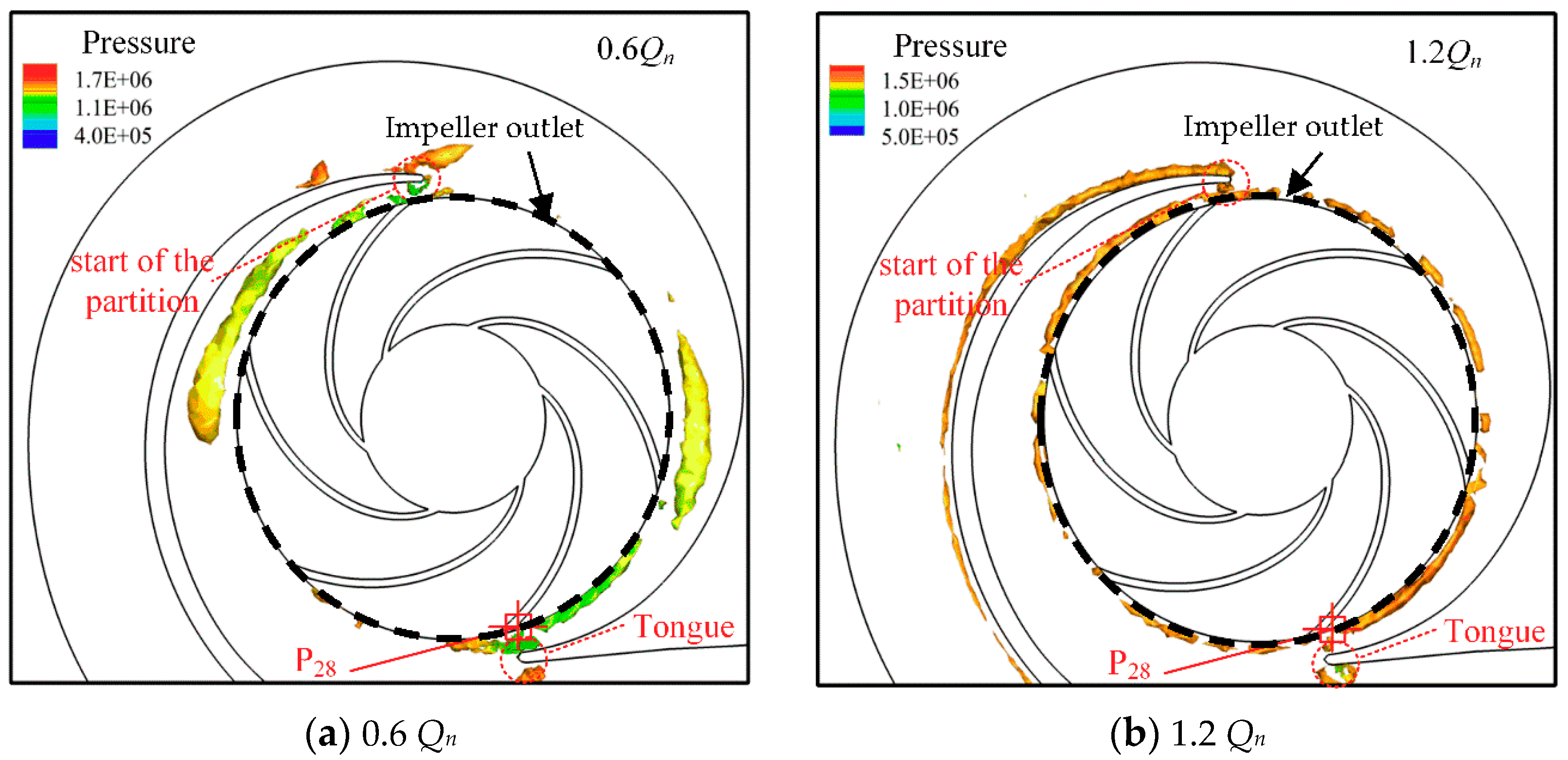


| y Plus | Suction Chamber | First-Stage Impeller | Inter-Stage Flow Channel | Second-Stage Impeller | Volute |
|---|---|---|---|---|---|
| Averaged | 21.16 | 38.74 | 55.99 | 49.70 | 73.15 |
| Maximum | 57.00 | 110.34 | 221.79 | 111.31 | 162.53 |
© 2019 by the authors. Licensee MDPI, Basel, Switzerland. This article is an open access article distributed under the terms and conditions of the Creative Commons Attribution (CC BY) license (http://creativecommons.org/licenses/by/4.0/).
Share and Cite
Wei, Z.; Yang, W.; Xiao, R. Pressure Fluctuation and Flow Characteristics in a Two-Stage Double-Suction Centrifugal Pump. Symmetry 2019, 11, 65. https://doi.org/10.3390/sym11010065
Wei Z, Yang W, Xiao R. Pressure Fluctuation and Flow Characteristics in a Two-Stage Double-Suction Centrifugal Pump. Symmetry. 2019; 11(1):65. https://doi.org/10.3390/sym11010065
Chicago/Turabian StyleWei, Zhicong, Wei Yang, and Ruofu Xiao. 2019. "Pressure Fluctuation and Flow Characteristics in a Two-Stage Double-Suction Centrifugal Pump" Symmetry 11, no. 1: 65. https://doi.org/10.3390/sym11010065





